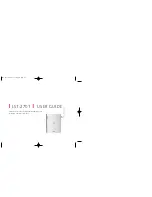
English |
17
Router bits are available in a wide variety of designs and
qualities depending on the intended application.
Always insert the router bit into the collet up to the
K marking
(32)
. If you are using a router bit without K mark-
ing, insert the router bit approximately 2/3 of the shaft
length into the collet.
Router bits made of high-performance high-speed steel
(HSS)
are suited to machining soft materials such as soft-
wood and plastic.
Router bits with carbide tips
are specially designed for
hard and abrasive materials, such as hardwood.
Original router bits from the extensive range of Bosch ac-
cessories are available from your specialist dealer.
Only use undamaged and clean router bits.
Installing the Routing Base (see figure A)
To start routing, the routing base
(2)
must be fitted back
onto the drive unit
(1)
.
Open the wing bolt
(11)
on the routing base
(2)
.
Slide the drive unit
(1)
into the routing base
(2)
.
Close the wing bolt
(11)
on the routing base
(2)
.
Note:
The wing bolt
(11)
and the knurled screw
(3)
can be
exchanged with each other.
u
After assembly, always check that the drive unit is
firmly seated in the routing base.
Dust/Chip Extraction
The dust from materials such as lead paint, some types of
wood, minerals and metal can be harmful to human health.
Touching or breathing in this dust can trigger allergic reac-
tions and/or cause respiratory illnesses in the user or in
people in the near vicinity.
Certain dusts, such as oak or beech dust, are classified as
carcinogenic, especially in conjunction with wood treatment
additives (chromate, wood preservative). Materials contain-
ing asbestos may only be machined by specialists.
– Use a dust extraction system that is suitable for the ma-
terial wherever possible.
– Provide good ventilation at the workplace.
– It is advisable to wear a P2 filter class breathing mask.
The regulations on the material being machined that apply in
the country of use must be observed.
u
Avoid dust accumulation at the workplace.
Dust can
easily ignite.
Connecting the Dust Extraction System (see figure D)
Insert the adapter for dust extraction
(10)
into the power
tool from the front. It audibly engages. To remove, grasp the
side of the adapter
(10)
and pull it off forwards.
Put an extraction hose (dia. 35 mm)
(29)
(accessory) on the
installed dust extraction adapter
(28)
. Connect the dust ex-
traction hose
(29)
to a dust extractor (accessory).
The dust extractor must be suitable for the material being
worked.
When extracting dry dust or dust that is especially detri-
mental to health or carcinogenic, use a special dust ex-
tractor.
Operation
Setting the routing depth
u
The routing depth must only be set while the power
tool is switched off.
– Place the power tool with a fitted router bit onto the work-
piece you want to machine.
– Reopen the wing bolt
(11)
on the routing base
(2)
in or-
der to set the required routing depth based on the scale
for setting routing depth
(18)
either by hand or with the
knurled screw
(3)
.
– Close the wing bolt
(11)
on the routing base
(2)
.
– Check the routing depth you have set by carrying out a
practical test and correct it if required.
Note:
To set the router depth for a rounding router flush with
the guide plate
(8)
, remove the routing adjustment aid
(30)
from its holder and insert it into the opening on the under-
side of the guide plate
(8)
intended for this (see figure
G
).
Then feel out the edge of the router bit
(5)
using the routing
adjustment aid
(30)
. Adjust the routing base height either by
hand or with the knurled screw
(3)
so that the routing ad-
justment aid
(30)
and the edge of the router bit
(5)
are
flush. Then close the wing bolt
(11)
on the routing base
(2)
and secure the routing adjustment aid
(30)
in its holder
again.
Starting Operation
Preselecting the speed
You can preselect the required speed using the speed
preselection thumbwheel
(12)
, even during operation.
Thumbwheel pos-
ition
Speed
[min
-1
]
1−2
10,000−14,000
Low speed
3−4
18,000−24,000
Medium speed
5−6
26,000−30,000
High speed
The values displayed in the following table are guidelines.
The required speed depends on the material and the work-
ing conditions; it can be ascertained through practical tests.
Material
Router bit dia-
meter [mm]
Thumbwheel pos-
ition
Hardwood (beech)
4−10
12−20
> 20
5−6
3−4
1−2
Softwood (pine)
4–10
12−20
> 20
5−6
3−6
1−3
Bosch Power Tools
1 609 92A 6FL | (29.09.2021)
















































